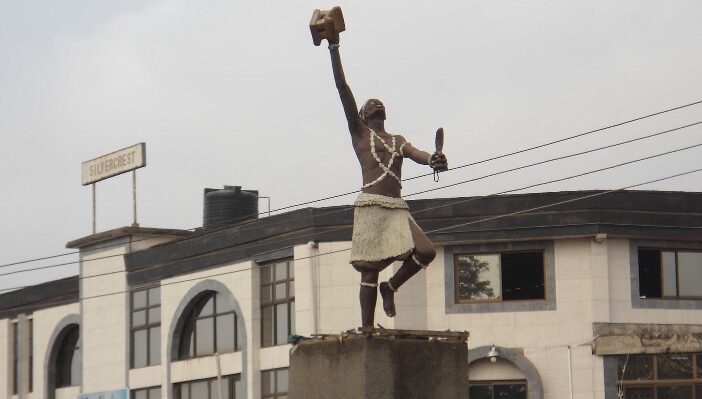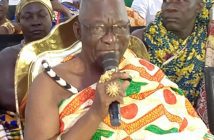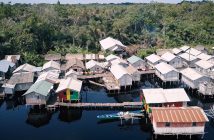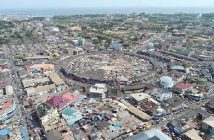The mysterious man with historical roots from the Ashanti region of Ghana, and the ‘saviour of the region from the time he stepped foot onto the Agona land, when said to be about fifty years old with no wife and children, till date.
He prepared war medicine at Nnuroso at Essien impong to inspire the warriors. At Nnuroso, a sacred orange tree that sprang from the ground when the left-overs of the war medicine that he sprinkled on the combatants poured on the ground, still stands. The fruit of this tree had a lethal effect if it was not eaten under the tree. Anokye’s deeds in Essien impong are remembered by Asante Kings. Essien impong chiefs are on this account permitted to shake hands with the Asantehene while still wearing sandals, which is prohibited to most Asante chiefs. Back then, Anokye prohibited any paramount Chief from walking on the soil of the town or seeing the town. Any Omanhene passing through was blindfolded and carried through the street to avoid being blinded.
An Edwiso Chief was said to have violated this custom and lost his sight instantly. The sons and daughters of Essien Impong are noted for their bravery and quick temper characteristic of Anokye and the effects of the war-medicine. He and his son Agyapa went to the kyenkyen tree, which he climbed to observe Ntim Gyakari’s camp at Feyiase. His footprints were visible in the trunk of the tree after he had climbed down and left the scene.
Small in stature with slender limbs, a seemingly delicate physique, but healthy, he withdrew into his farm or other quiet places for inspiration, from time to time.
The spirit of adventure with which he grew up probably accounted for his capacity to endure hardship and later gave him strength to go into voluntarily exile, with his hair knotted up in locks.
As a child he was not given to laughter and was not often seen playing with other children. Fun making and jokes irritated him. He was usually witty in asking and answering questions, a characteristic that made the elders marvel. He would sit among elderly people and hold prolonged discussions with them; they were astonished at his command of language as well as his extensive knowledge of tradition.
He would sometimes, as a child, go without food or eat very little for three days or more without suffering any ill effects.
He was reputed to be brave and daring. He was domineering and revengeful, a dangerous and formidable opponent who was sometimes extravagant in his outbursts of temper.
He exhibited practical common sense, rare wisdom and an extraordinary oratorical power height corresponding with that of the fingers on the hand.
He stretched a cow-tail on a river and a crocodile came out of the water.
He hit the ground with his flywhisk and water began to flow from the ground. He planted a plantain sucker and harvested it the same day. His sandals drowned in a river, so he “removed” the river’s power to drown any people. After placing three eggs in the Mampong Valley, this is regarded as the reason why there are no accidents in Gyamaase.
He cursed a woman who turned into a river.
A tale told by the natives of the land say that, ‘All those guilty of not heeding his instructions against his funeral were caught up in the Bonkobuom cave.On festive occasions, mysterious drumming and noises can be heard from inside the cave though no one is seen there’.
He laid a pipe on the ground and it turned into a river during the Agona-Dwaben War. At Agona Akyempem, a mukya (cooking tripod of clay) appears and disappears from time to time. So do earthenware/clay receptacles of liquid.
Goats that passed directly under the drums he had suspended in mid-air lost their lives. He sat an albino man on a stool, made him disappear and outlawed the sacrificing of albinos from thence.
He hand-sculpted another oware game out of rock at Gyaakye, and cursed the Gyaakye people for seizing his fly whisk and calling him a demon.
At Akutuagya, he caused a palm nut tree with an upward/vertical split in the middle to grow, and told people that it was possible/there was a way to live forever.
He said the taboos of death included funerals: solemn drumming, gunshots and mourning. Siaw Anim, the caretaker of the stool in Anokye’s absence wanted the stool so badly he chose to flout Komfo’s orders.
When his auntie died and Anokye had gone out to bring the cure to death, Siaw Anim organized a funeral. Some people protested but Siaw and his close friends wept and fired guns. Anokye was returning to Agona by then with the antidote to death. He met a young man from Gyamaase who told Anokye when he asked that it was his sister’s funeral that was being held. He introduced himself, handed the young man his bodua(fly whisk) and asked him to take it to the funeral grounds with a message that it was from Komfo Anokye. The young man protested that they would kill or maim him. Anokye told him to be confident and go aheadas he would be protected no matter what. So he went there with Anokye’s bodua and delivered the
message. The stunned mourners quit their folly and hurried to Atonsu where the young man said he had met Anokye. Komfo had disappeared when they got there.
He prophesied that nothing could disrupt the Asante nation’s stability unless the Sword was removed. Which is evident in the build up of the economic status of the region. In 1952, when the constructor of the Komfo Anokye Teaching Hospital, which is located close to the Sword, said he had to remove the Sword to facilitate preparations for the building of the facility, those who knew told him the rationale behind the presence of the Sword. He went ahead and tried to use a bulldozer to remove it. The Sword would dip underground for the bulldozer to pass and resurface afterwards. After about a month of trying, he gave up bewildered. Muhammed Ali the legendary former World Heavyweight Boxing Champion, with permission, attempted to pull it out and failed like all the other strong men who tried.
In 1900, there was an effort to cover the Sword with a cage. Plunderers tried to break this off thinking it was made of gold. Anokye vanished from this plane of existence with his bodua in hand.
The mystery behind the three eggs at Gyamaase is how they got there. Some think Anokye had something to do with their presence. They have been there over the centuries.
His mysterious acts did not end here, he chewed a kola-nut, spat it to the ground and a white kola nut tree grew from that spot.
Oral history indicates that, one day as Anokye was travelling, he chewed Cola, and upon reaching a spot at Feyiase, he spat on the ground, and by the time he returned days later, it had germinated at the spot. According to history, the tree grew rapidly, but only had fruits in some years and not all every year, compared to other trees. Strangely enough, the tree became solely for medicinal purposes, curing all kinds of ailments. With time, the chiefs and people of Feyiase started to pour libations around the as it was and is still seen as a sacred tree. According to the chief linguist, the tree planted about 11 decades ago, still showed mysterious signs as when it was first planted. However the old kola tree died, and after some rituals were prepared, a new one was built in its place.
The linguist to the Feyiasehene, Okyeame Baffour Awuah, said that, ” I am a witness to many women who have gotten babies after they used part of the bark of the kola tree as medics after many years of barren ness’. He again said, ‘the tree does not bare pods yearly like every ordinary tree does, but when it does, there is excitement among the people of Feyiase, since whoever gets the nuts from the tree gets breakthrough in many ways’.
According to Okyeame Awuah, each time someone picked the kola nut from the tree, it usually had two colours in the pod, one black and a red one, indicating that, Okomfo Anokye is still with them healing them from all kinds of ailments with just a bite.
Due to its location being at the lake road within the Feyiase community, they have built a wall to protect it from being destroyed by road developments or any form of developments in the community.
REFERENCES
1. Available online at, https://www.academia.edu/9340673/The_Komfo_Anokye_Story.
2. A Story by Felix A. Baidoo, Retrieved from the Daily Graphic Newspaper, on the 6th of November, 2020.





